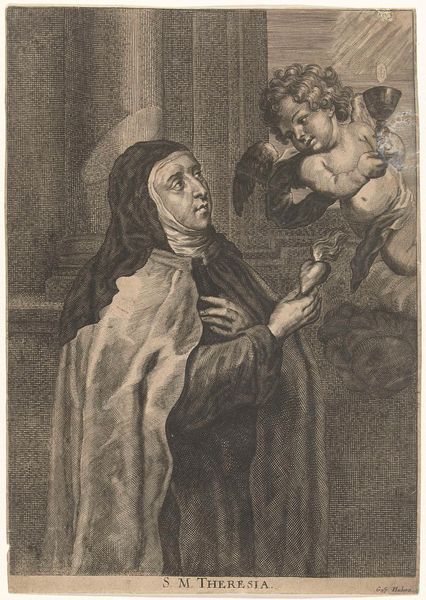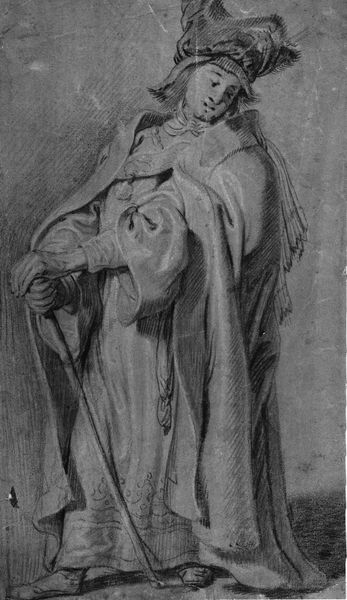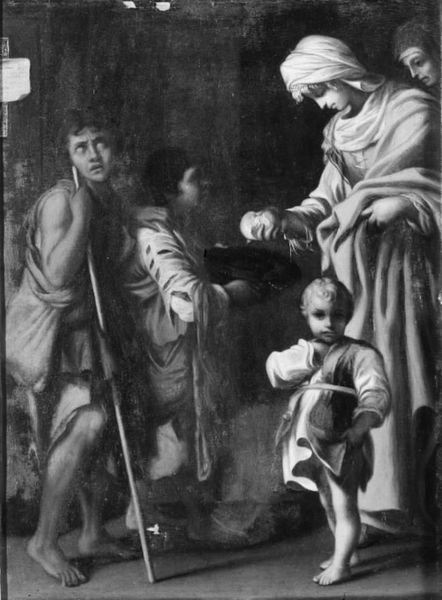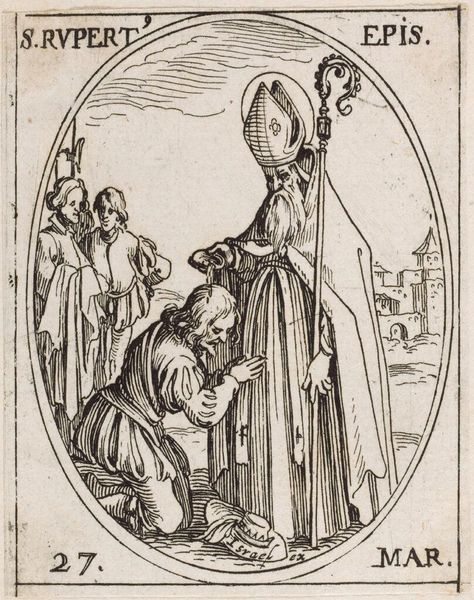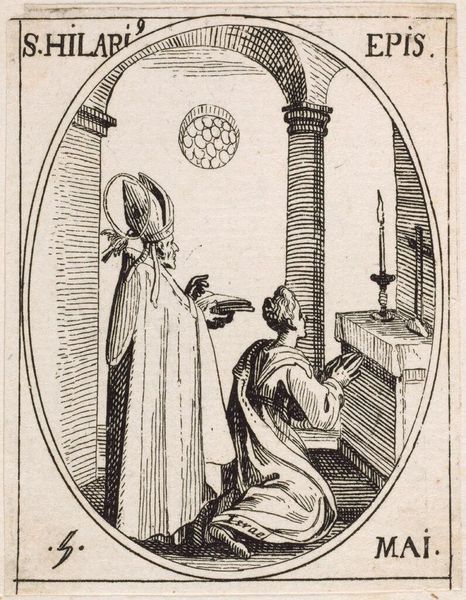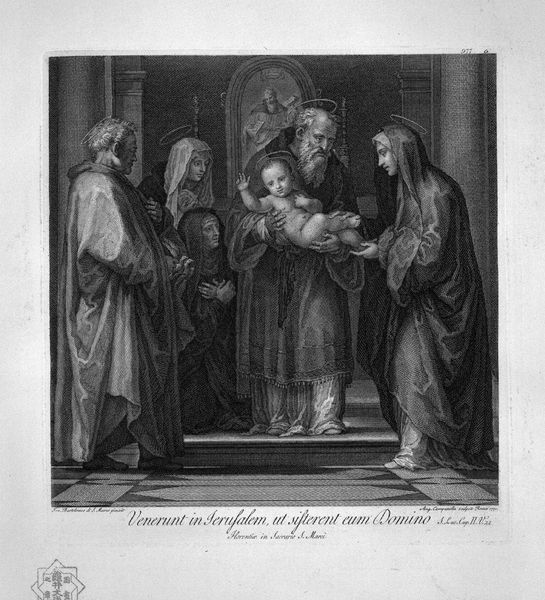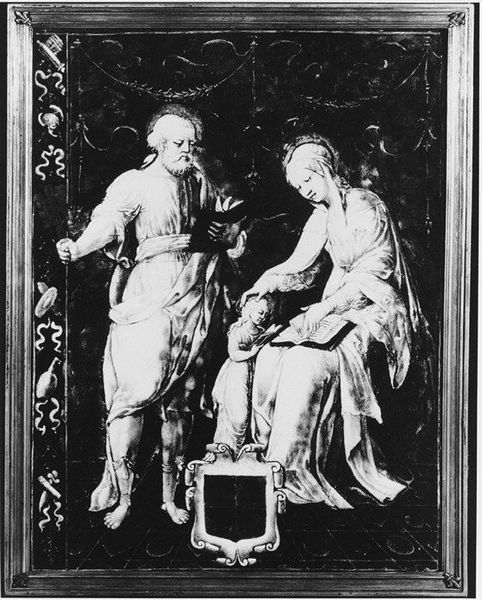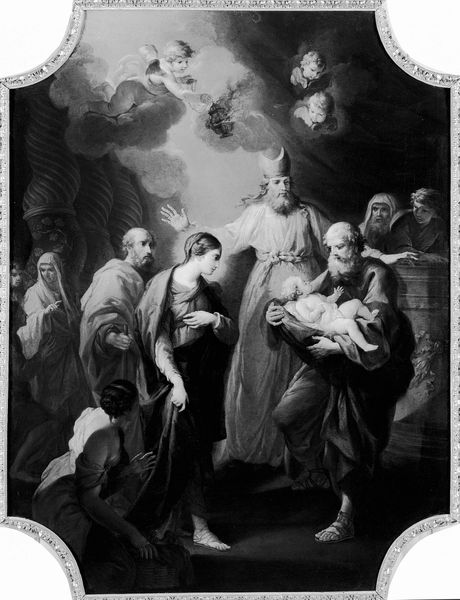
Dimensions: 48.5 cm (height) x 43 cm (width) (Netto)
Editor: Here we have "A Trumpeter delivering a Letter to a Lady," an unsigned painting, possibly Baroque, created sometime between 1727 and 1827. I notice its monochrome palette and detailed rendering of textures in the garments, but overall the painting appears in worn condition. What catches your attention about this work? Curator: What immediately strikes me is the representation of labor. The trumpeter, a symbol of military service and therefore state power, is reduced to a deliveryman. Consider the socio-economic context: What materials afforded the artist the opportunity to even make this painting? And who paid for them? Was it perhaps to indicate something about this family, their societal ties, or their relationship with politics? Editor: That's a perspective I hadn't considered! I was so focused on the interpersonal drama seemingly unfolding. So, focusing on materials, what would an artist need to create something like this? Curator: Pigments would have been meticulously sourced and costly to refine. The canvas itself involved a whole chain of production – growing flax, weaving, treating…and all of that requires labor. Then, there's the symbolic weight of representing this labor. Think about the dog, sitting there on the chair, does the fact it gets a fine chair say something about labor, status, and who can literally be seated versus working? Editor: I see what you mean! Focusing on materials, it speaks volumes about status and class. It prompts me to think about who *didn't* have access to such materials and the labor required to produce the final artwork. Curator: Exactly. Examining art through the lens of materiality reveals so much about the societal structures at play. It's not just about aesthetic appreciation, but about power and production. Editor: This perspective helps appreciate how artwork has so much historical and social implications by considering all the hands, materials and processes behind it. Curator: Indeed. By considering labor, materials, and the conditions of production, we unearth the power dynamics embedded within even seemingly simple paintings.
Comments
No comments
Be the first to comment and join the conversation on the ultimate creative platform.


